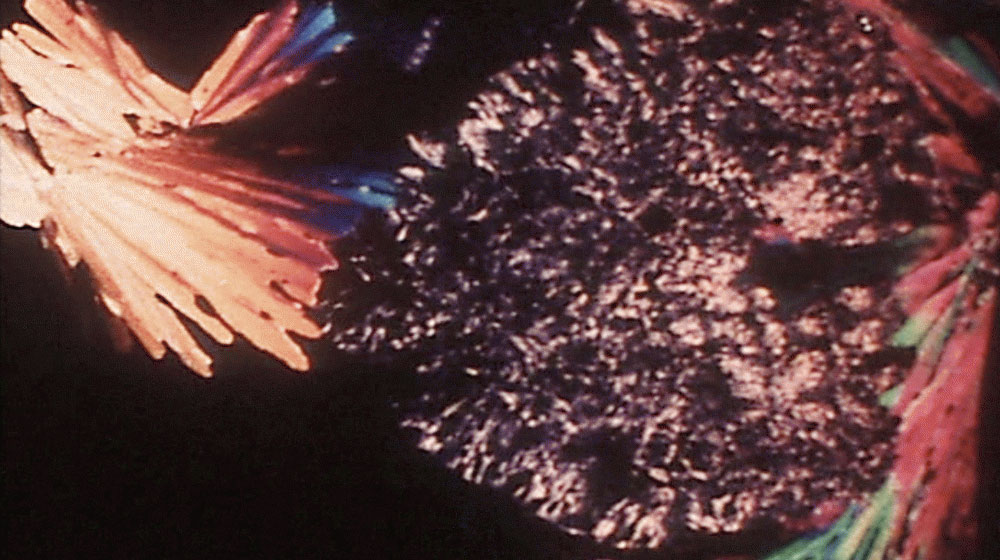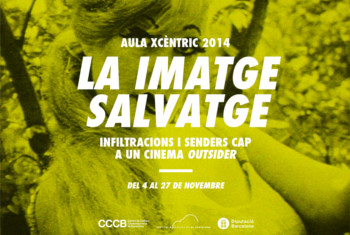The main character in Thom Andersen’s cinema is cinema itself. His films are, in the main, essays produced by using different formulas, some of them informative, others more analytical and others that are evocative, inscrutable, abstract and even poetic. All of them, in any case, confront us with images that become infiltrated from the screen into our imaginary, but about which we ask virtually no questions, either about their origins or their effects on our idea of reality, or about the links that are established between them and other artistic and intellectual expressions. In fact, when he was asked which filmmaker has most influenced him in terms of filming landscapes, Andersen replied: “In fact, I’ve been influenced above all by the photography of Walker Evans, which has been part of my consciousness and unconscious since I was a teenager.”
The images that appear here are like his work, a reflection of a complex fascination for cinema, unsettling owing to the way it reveals the scope of cinema’s impact as a medium: the big image factory is, inevitably, a big factory of ideas, even though these don’t always arrive in the ways we might expect.
Nothing in cinema dies within the confines of the screen; from the craziest comedy to the least credible screenplay, they all arrive before us, filmed, situated and performed in a way that may turn out to be memorable, significant and transformative, even if these effects are not always obvious or immutable. It’s a way of understanding cinema that doesn’t even have to do with the ‘quality’ or the critical appraisal of a film. One good example is the image of a train arriving at a station, a motif that is foundational and recurring in movies and which gives rise to a rich, curious connection between one medium and another: railways and cinema. Because while they do not apparently have anything to do with each other, forms, sound, narratives and psychoanalysis are all bent on linking them together.
The first image, therefore, could be of that train arriving in La Ciotat by the Lumière brothers, or of any other film by Ruttman, Ozu, Hitchcock or Leone, whether or not they appear in A Train Arrives at the Station (2016), the short film which Andersen introduces thus: “This film was like a gift for me. I make no claims for it, nor do I offer any apologies. It comes from work on The Thoughts That Once We Had (2015). There was one shot we had to cut whose loss I particularly regretted. It was a shot of a train pulling into Tokyo station, from Ozu’s The Only Son (1936). So I decided to make a film around this shot, an anthology of train arrivals. It comprises 26 scenes or shots from movies filmed between 1904 and 2015. It has a simple cereal structure: each scene in black-and-white sequence in the first half rhymes with a colour sequence in the second half. Thus the first shot and the final shot show trains arriving at stations in Japan from a low camera height. In the first shot (The Only Son), the train is moving towards the right; in the last shot, it is moving towards the left. A bullet train has replaced a steam locomotive. So after all these years, I have made another structural film, although that was not my original intention”.
His words reveal how complex the process can be in his work after the selection and editing, even though watching it often gives us a purely intuitive pleasure, the illusion of an accessibility that is facilitated by a familiarity and fascination for everything he depicts: motifs, gestures, settings and points of view that sum up our feelings for cinema, and which have contributed to the specific way that cinema has linked us to the world and its tales.
The occasional tampering (for example, with the soundtrack in certain shots) reveals, on the other hand, the subtlety with which Andersen constructs meaning and makes the extraneous material his own without betraying the original.
“I liked the shot of the train in Shadow of a Doubt (Hitchcock, 1943), but I hated the music that accompanies it. So I thought, why not replace it with music from another Hitchcock film? A kind of music that would mark the image as one from a Hitchcock film. The music from Psycho (1960) is appropriate because the train we see in the image is bringing the sinister Uncle Charlie, the serial killer, to this bucolic small town of Santa Rosa.”
“The image that corresponds to it in the second part of the film comes from Hélas pour moi (Godard, 1993). Oddly, the music seems to belong, even though Godard would never use the music in this way. This shot also has a dramatic role in the film, similar to the aforementioned train shot in Shadow of a Doubt. We don’t yet know that the man in the raincoat is also quite sinister.”
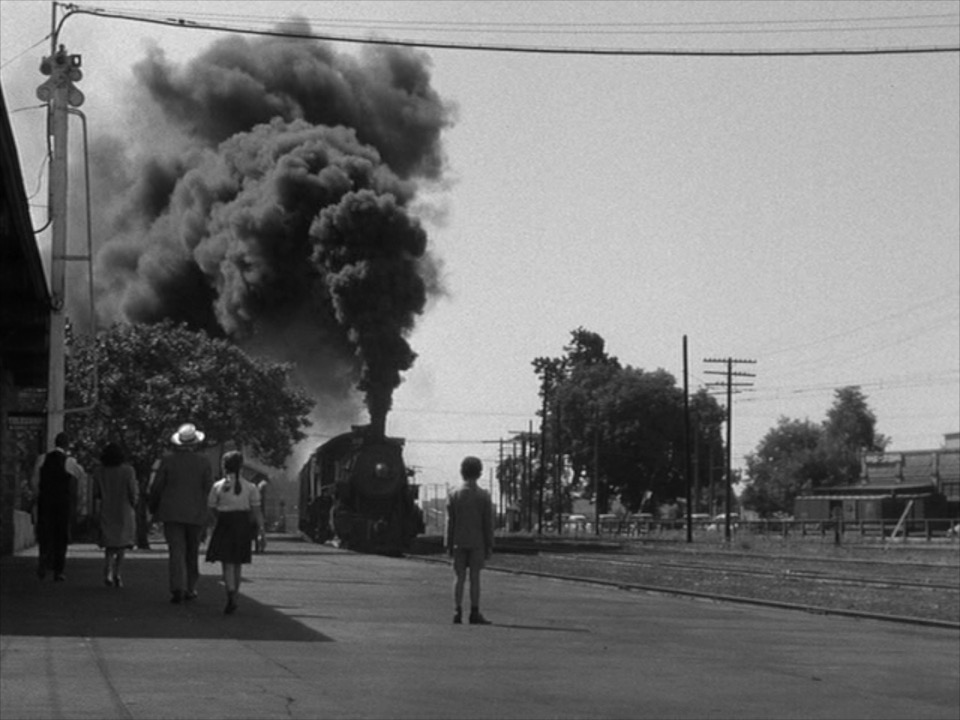
A Train Arrives at the Station, 2016
A Train Arrives at the Station
“For me, the arrival of a train is the primal scene of cinema. I’ve loved trains ever since I was a child. I think that the railway is still the most glamorous form of transport. The classic book about the railroad is The Railway Journey, by Wolfgang Schivelbusch, but I am particularly fond of some passages in The House of the Seven Gables and Art and the Industrial Revolution, by F. D. Klingender. For me, these are the great train movies: The Lady Vanishes (Hitchcock, 1938), Shanghai Express (Von Sternberg, 1932), RR (Benning, 2007), Johanna D’Arc of Mongolia (Ottinger, 1989), Trans-Europ-Express (Robbe-Grillet, 1966), The Iron Ministry (Sniadecki, 2014), Railway Sleepers (Sompot Chidgasornpongse, 2017) and The General (Keaton, 1926). Of course, I’m forgetting some that I would mention if I remembered them. None of these movies appear in A Train Arrives at the Station, except for Shanghai Express.”
On seeing this delightful short film, which is at the same time memory and reflection, art and essay, it makes me think that cinema should be the essential medium we use for inscribing cinema’s own history and analysis. Instead, paper has been the medium with which we have learned to organise and understand cinema. The ways in which cinema has been conceived and has questioned itself – using appropriation or compilation – are numerous, from the works of Bruce Conner to those of Peter Delpeut, as well as Gustav Deustch, Jean-Luc Godard and Nicolas Provost, without forgetting the fine efforts made in informative films by Kevin Brownlow and Mark Cousins. A special mention should also go to the works made by those who have done something similar, though without focusing on what we call ‘the history of cinema’, but instead on the history of moving images from a broader perspective – from Harun Farocki to Hito Steyerl and Johan Grimonprez. Andersen has tackled the essayist and artistic possibilities of this ‘before the abyss’ cinema, which is reflective, referential, recursive and even cannibalistic, and he has done so in a very rich, profound way. His aim was to examine the very history of the medium – as in Red Hollywood (1995) – and he has done so in more radical, almost inscrutable ways, to examine the very power of the cinematographic image and its indelible, transversal presence. Sometimes these compilations are more fragmented in nature, choreographic but not narrative, and they are given short formats, like in California Sun, a short film he made with Andrew Kim which is less than four minutes long and functions almost as a music video for a track by The Farmingdale Sound Machine.
In some cases, like in that of his best-known film Los Angeles Plays Itself, cinema has been used to tackle subjects that interest him, such as architecture, fiction being understood here as a symptom and a distortion of the reality: “I have made movies from other movies because they were the only kind I could afford. Los Angeles Plays Itself came about because I couldn’t find outside support for another movie I wanted to make about Los Angeles architecture.”
After he had given up the idea of filming in Los Angeles to illustrate his reflections on the city’s architecture, his work became focused on portraying his city, as we can see from the text in the trailer with which he presented the film: “This is the city: Los Angeles, California. I live here. I make films here. Sometimes I think that gives me the right to criticize the way movies show my city. I know it’s not easy. The city is big, the image is small. It’s hard not to feel resentful at the idea of Hollywood, the way in which films distance themselves and place themselves above the city. People blame cinema for all kinds of things. I accuse it of betraying the city where it was born. Maybe I’m wrong, but I even blame it for the fact that the city’s name has been abbreviated to L.A.”
This exploration of the city through time and cinematographic genres is comprised of more than 200 movies, though it must be said that significant parts of this famous essay are inundated with crime and an aroma of intrigue, corruption and typical noir elements. In several articles (i.e. in ‘Collateral Damage: Los Angeles Continues Playing Itself’, published in Cinema Scope in 2004), Andersen clearly demonstrates his exhaustive knowledge of the films that have been shot in the city and the way its geography has been celebrated, amputated, invented or deconstructed in this or that movie. For years he has clashed (sometimes with a certain weariness, it seems) with those who have pointed out the omission of certain films.
Perhaps the most commonly-mentioned movie is Mulholland Drive, in which the city is depicted in that mythological, multi-referential, phantasmagorical dimension, voracious and drunk on itself: “As for David Lynch’s Los Angeles trilogy (Lost Highway, Mulholland Drive and Inland Empire), in fact I saw those films outside of Los Angeles, in the company of three different film-makers: Lost Highway in Rotterdam with Nina Menkes, Mulholland Drive in Montreal with Béla Tarr and Inland Empire in Chicago with Deborah Stratman. It was Inland Empire that finally won me over. I thought of what John Waters once said: ‘There are no bad movies, you can always watch the lamps.’ And in Lynch’s films, the corridors. Errol Morris wrote: ‘There are no good films, only great scenes’. And there are great scenes in almost any David Lynch movies. And I like that that there is no psychology in his films. They’re about the intermittencies of human beings, not their various faces.”
In spite of his lack of interest in the films of Lynch (whom he considers to be a tourist in Los Angeles, despite the fact that the director has lived there for years), we can take him at his word and accept that the value and pleasure of cinema can also be found, in a subjective, fragmented way, in independent elements that float in our memory. For Victor Burgin (The Remembered Film), the purpose of films, of cinema, seems to be precisely that: to create a host of references, fragments, phrases and shots that we can use, personally and collectively, even if we have forgotten who made them, the plot or any other element from the original context.
Within the interweaving of shots and reflections there is a cinema of archiving, appropriation and essay (Basilio Martín Patino, Philippe Mora, Bill Morrison, Adam Curtis and, of course, Andersen) which participates (and often working against the tiresome action of TV compilations) in rescuing these shipwrecked remains. Which images will survive, and how will we remember them? What will we see in them?
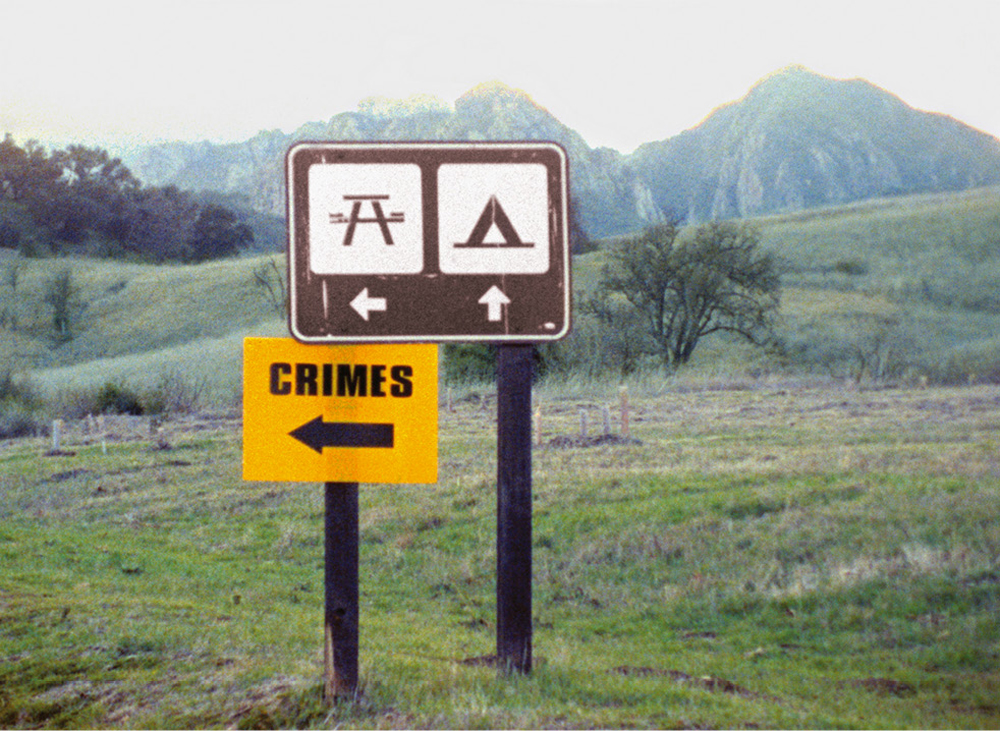
Los Angeles Plays Itself, 2003
In Los Angeles Plays Itself, particularly, it is interesting the way the text (Andersen’s voice) guides the film, because of the amount of references and the need to explain to us what and how we should understand each fragment in the film as a whole, and its purpose.
“The beginning of Los Angeles Plays Itself was the most difficult part. My words at the beginning attempt to express the method of the film and its sources in film theory. So I tried to find images to express abstract ideas like horizontality and verticality, foreground and background, voluntary and involuntary attention and suspense. In the end, I think I did pretty well.”
“With respect to the narrative of the film, to put it simply, sometimes the words come first, and sometimes the images come first. With most of the films I treat at greatest length, such as Chinatown (Polanski, 1974), the words come first. I was working from a general impression of the film, with its theme, one might say. So I had to find scenes that expressed these themes most clearly. With Chinatown, it’s easy: it’s the final scene and the final line that express its particular sense of disillusionment.
“I’m not much of a writer. I simply take dictation from my unconscious. Sometimes it doesn’t say anything, and I have to wait. Of course, the unconscious needs material to work with. That requires research. For me, research is the most enjoyable part of film-making.”
In works such as Los Angeles Plays Itself, Andersen steers this cinematographic and architectural panoramic view unhesitatingly and with a documentary aplomb. It is hard to think of it being dictated by his unconscious. However, in other, more open narrative works, such as The Thoughts That Once We Had, the idea of a cinema for conceiving images, a space in time that is useful for thinking and even daydreaming, becomes a reality that is just as necessary as it is interesting: “To me, The Thoughts That Once We Had is a dream film, but I accept ‘a space for thought’ as a precise characterization of ‘A space of time filled with moving’: which is a phrase from Gertrude Stein I wrenched out of context as a definition of cinema. I like her use of the gerund: it rescues any verb from its roots in Latin or Greek.”
Despite its complexity, The Thoughts That Once We Had somehow resembles a song, or a celebration of cinema and its mysteries. Perhaps (and better than any of his other works) it forces us to face the tension between abstraction and the concern with unweaving its architecture. “How lucky we are to have all these images. I can call them thoughts because I believe that films are remembered, not perceived. The persistence of vision is the persistence of consciousness.”
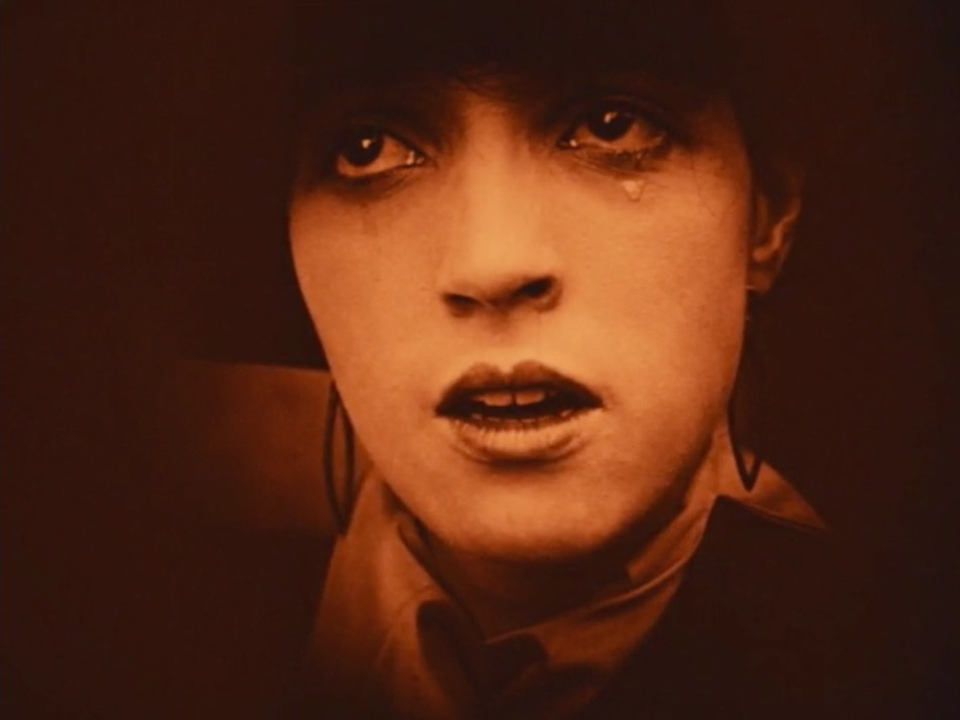
The Thoughts That We Once Had, 2015
One element that it seems impossible to avoid when working with archive material is that of nostalgia – nostalgia that is vague or intense, catchy or melancholic. Something that is to some extent attempted in works such as this one (or others by Peter Delpeut, for example), but which are also present in the films of Adam Curtis, which are based on TV archive material that is apparently irrelevant, pure reject footage, often in a defective state.
“The three texts at the end (by Joseph Roth, Christina Rossetti, Mick Jagger and Keith
Richards) are about memory, and they are quite melancholy. There is the disappearance of memory in Roth’s novel The Radetzky March, the ‘darkness and corruption’ of our time through which only a vestige of a memory can pass in Rossetti’s poem, and the numbness in ‘As Tears Go by’, the smiling faces that are not ‘for me’. It is strange that so many of the songs of these young Rolling Stones are so melancholy: ‘I Can’t Get No Satisfaction’, ‘Paint It Black’; only later could they sing about love. In my film, love is always doomed: ‘Now that Saeko is dead, I yearn for her, body and soul’, says Muraki in Pale Flower (Masahiro Shinoda, 1964).”
“Despite its title, The Thoughts That Once We Had is not an ‘end-of-cinema’ movie. There will always be places where people can come together to see moving images projected before them. These place may become fewer, they may become smaller, but abide they will.”
Another question is what we call cinema, and where we separate everything it defines or which belongs to it. In this respect, things are still rather rigid, if not confused. As I write this, I have just seen the news that after next year, the Cannes Festival will not be accepting films that are not designed to be premiered there. Has cinema become defined by its system of exploitation and consumption? For others, the abandonment of the photochemical support, in the shooting and the screening, will also dramatically mark the cinematographic experience, if not precipitate its death. These issues are still being discussed at the beginning of the 21st century.
“I hate computers, but none of my work since Edward Muybridge, Zoopraxographer (except Get Out of the Car) would have been possible without them. And with respect to the difference between analog and digital, I was taught that light is both particle and wave. Cinema, the film, is the grain of light; the digital is an emanation. Film is the particle, and the digital is the wave. In fact though, it is not a question of an analog image against a digital image. Photographic images are digital! The silver halides in the emulsion are either reduced to pure silver or they are not. That is, they become purely black or purely white. It is actually a difference between a chemical and an electronic image.”
Technological innovations can better define the functions of technologies that we deem obsolete. The pen has better defined the function of the pencil, and even of the fountain pen, which in some senses are irreplaceable. Technology in itself only reveals to a very few people what its use can evolve into. Our imagination sometimes limits the use of technology, revealing its potential as our interests are directed to new scenarios. Sometimes by sheer chance; or rather, by accident.
One strange example is Muybridge and his photographic sequences. The device he used is basically the same one the Wachowskis used in The Matrix (1999), over 100 years later.
Muybridge used this device (a series of sequentially-activated cameras) to analyze the stages of movement, but at the end of the 20th century, what interested us was something very different: depicting the possibility of managing time at will. In rare instances, Muybridge photographed an action from several different angles simultaneously, though never from all of them, I don’t think.
“Muybridge was the first creator of a medium of motion pictures to create this effect. Contrary to what you say, he did capture, on numerous occasions, one single action from six or eight different angles. And in most of the sequences, there are three different angles on a motion. Thus Muybridge created what we call the continuity system of editing. It’s true that Muybridge never photographed an action in 360 degrees; he always kept his cameras on one side of the ‘180 degree line’. In my film, I always show the images from one angle sequentially, or images from two angles simultaneously. But it would be just as logical to cut between images made from different angles within a single sequence. Thus we can say that Muybridge also invented editing.”
Andersen knows all about Muybridge and the impact his work caused, since he made an extraordinary documentary film about him in 1975 – Eadweard Muybridge, Zoopraxographer – a work that was incorporated into the US National Film Registry preservation program in 2015.
“My interest in Muybridge started when I was a film student at the University of Southern California in the early 1960s: just flipping through a few pages of The Human Figure in Motion, and I was hooked. My friend Dave Hanson made a little film animating some of Muybridge’s sequences. I didn’t like Dave’s film because the ragtimey music he chose made the images look quaint. My film was a response to his, but of course I had other reasons to make it.”
“Muybridge’s work anticipated all the ideas that informed contemporary art-making: serial imagery, the grid, the aleatory. It also influenced the three short films I made in the mid-‘60s. When the Pasadena Art Museum presented a show organized by John Coplans in 1968 titled ‘Serial Imagery’, it included Monet and Mondrian as well as Warhol and Stella. But Muybridge obviously belonged. Now almost all painters and all photographers work in series, but back then it was rare. I guess the grid was most obvious in the work of Sol Lewitt, Carl Andre, Agnes Martin, and Donald Judd.”
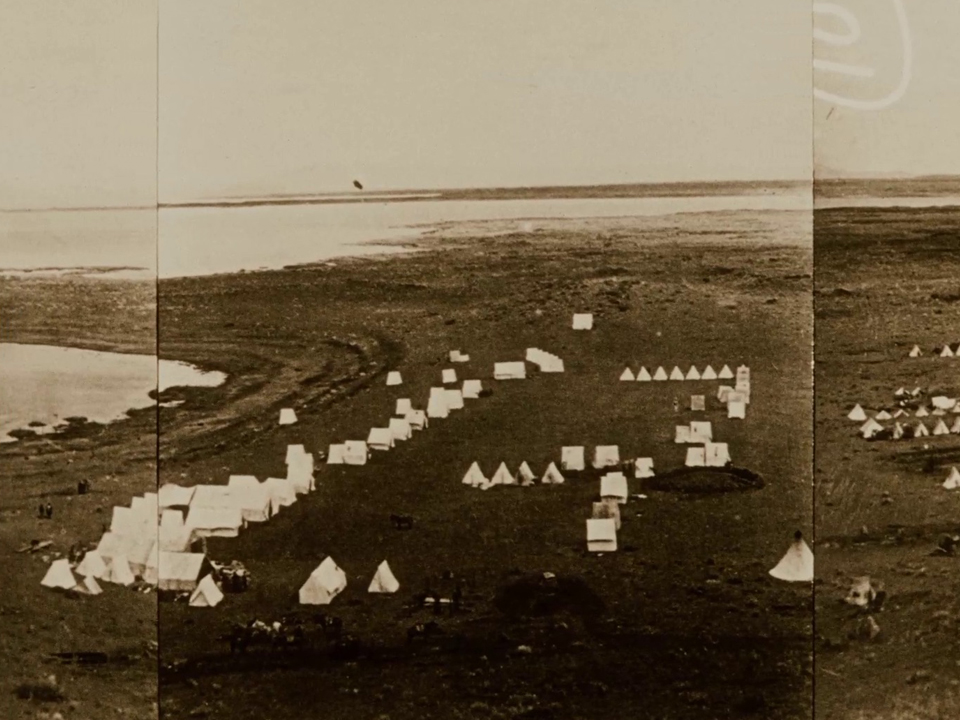
Eadweard Muybridge, Zoopraxographer, 1975
We come to discover Muybridge through many different interests and research, and if his presence persists in our imaginary it is because of all the times we recognise the mark he left, and even the opportunity to present it in all kinds of projects. Furthermore, Muybridge’s work includes other subjects and technologies beyond chronophotography, such as his panoramic and stereoscopic explorations of the landscape of North America. It was this polyhedral quality of Muybridge, and Andersen’s own through artistic education, that were behind the decisions on how to approach the documentary, which is so rigorous and expressive in its screenplay and its visual solutions.
“When I was young, architecture affected me more than painting did. So I liked art that was becoming like architecture. I knew when it happened, I felt something in its presence. But I didn’t know why I recognized it. It took reading Michael Fried’s ‘Art and Objecthood’ in 1967 for me to understand. According to him, what I felt was not an aesthetic sensation, but a spatial one; I was experiencing its presence.”
“This was the “theatricalist,” and it was the enemy of art. But I believed, and I still believe that it is presence that creates the shock of recognition which is the primary aesthetic sensation. Through negation, I discovered a materialist aesthetic that I confirmed later by reading Edmund Burke’s treatise on the beautiful and the sublime. So I set out to make a ‘theatricalist’ film about Muybridge. That is, the images had to pulsate.”
“The aleatory, chance, accidents: in Muybridge’s work, the system is so rigid that chance reveals itself as grace. John Cage was the champion of the aleatory then. He opened the doors of perception to me, particularly in the little parables he read on his Indeterminacy record album. So it was first of all Cage who led me to Muybridge.”
Andersen’s films act precisely in this way, establishing surprising paths of knowledge and possibilities of interpretation that make the cinema of fact uniquely compatible with the documentary, the essay and visual poetry.
That’s why, if you ask him about a filmmaker, he’ll mention a photographer, and if you ask him for a frame featuring a train, he will give you suggestions on books about railways.
And it’s true, the world of images was there before we knew how to portray them.
Andrés Hispano


